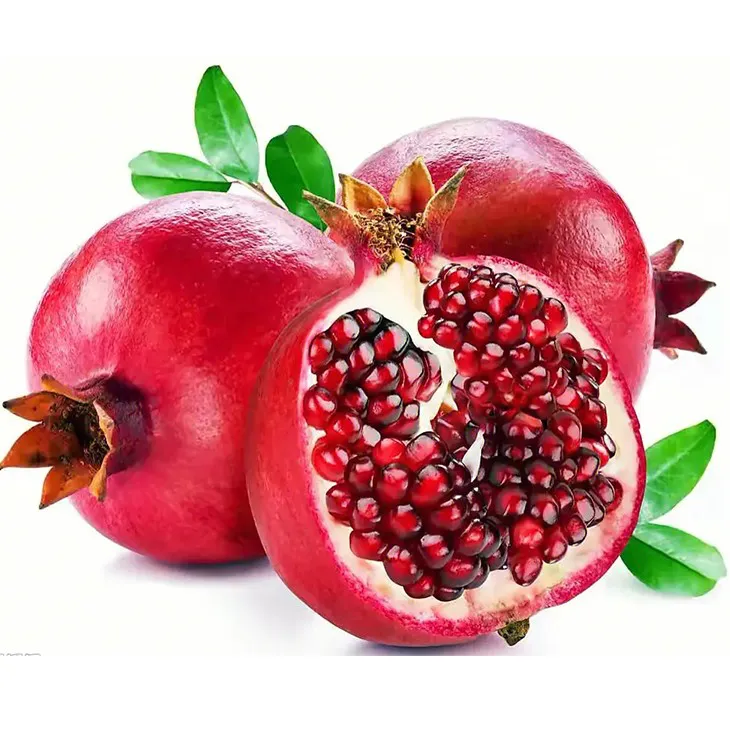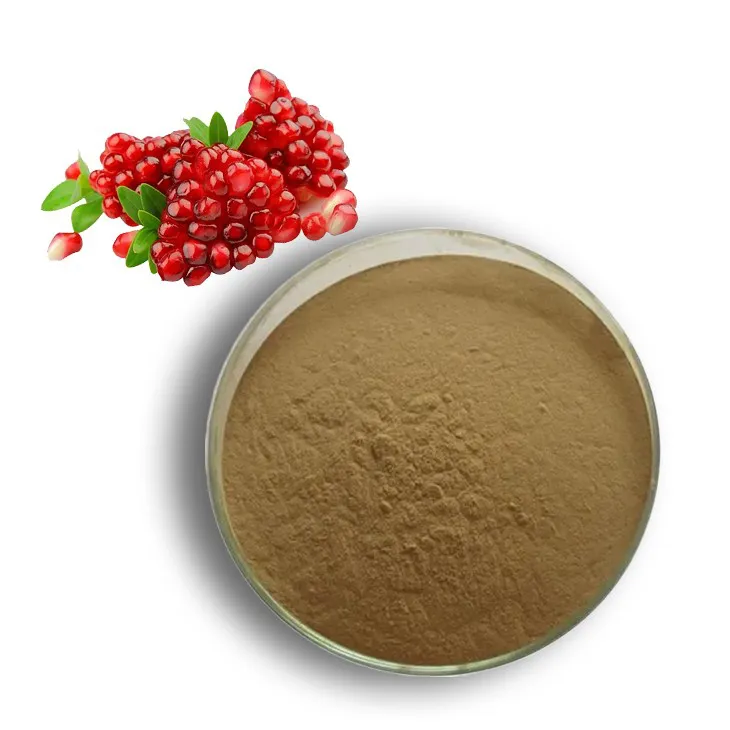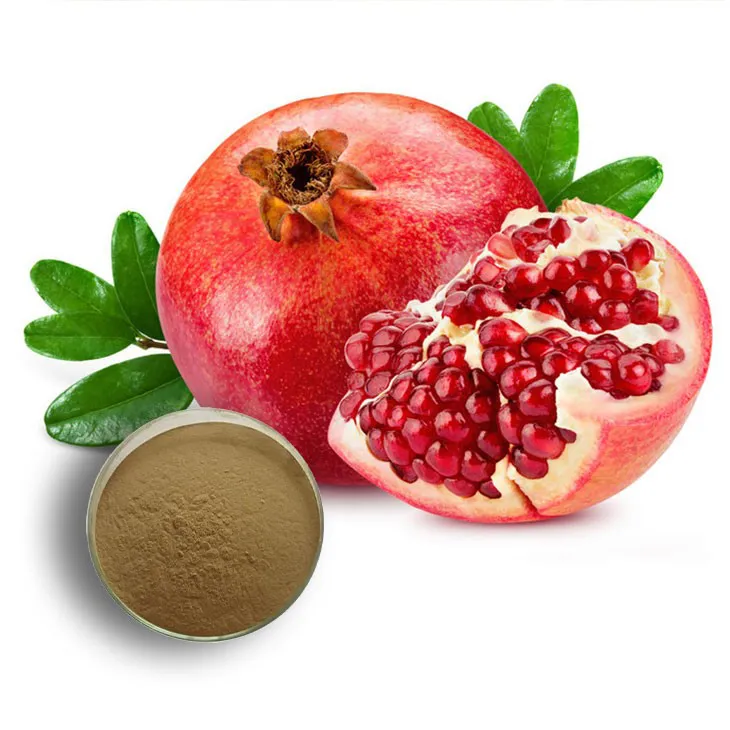- 0086-571-85302990
- sales@greenskybio.com
The process of extracting pomegranate polyphenols from pomegranate extract.
2024-11-30

1. Introduction
Pomegranate is a fruit rich in various bioactive compounds, and pomegranate polyphenols are among the most valuable ones. These polyphenols have been associated with numerous health benefits, such as antioxidant, anti - inflammatory, and anti - cancer properties. Extracting pomegranate polyphenols from Pomegranate Extracts is a crucial step in isolating and utilizing these beneficial compounds. This article will explore the extraction process in detail, including different extraction methods, factors affecting extraction efficiency, and the purification and identification of pomegranate polyphenols.

2. Source of Pomegranate Extracts
Pomegranate Extracts can be obtained from different parts of the pomegranate fruit, such as the arils, peel, and seeds. Each part contains a variety of polyphenols, but the composition and concentration may vary.
2.1 Pomegranate Arils
The arils are the juicy, edible part of the pomegranate. They contain polyphenols such as anthocyanins, which are responsible for the red color of the arils. These anthocyanins have antioxidant properties and can be extracted for various applications in the food and nutraceutical industries.
2.2 Pomegranate Peel
The peel of the pomegranate is a rich source of polyphenols, including punicalagin, ellagic acid, and gallic acid. These compounds have been shown to have strong antioxidant and anti - inflammatory effects. However, extracting polyphenols from the peel can be more challenging due to the presence of other substances such as cellulose and lignin.
2.3 Pomegranate Seeds
Pomegranate seeds also contain polyphenols, although in relatively lower concentrations compared to the peel. The main polyphenols in seeds are tannins and flavonoids. These compounds can contribute to the overall health benefits of pomegranate extracts.

3. Extraction Techniques
There are several techniques available for extracting pomegranate polyphenols from pomegranate extracts. Two of the most commonly used methods are maceration and supercritical fluid extraction.
3.1 Maceration
Maceration is a simple and traditional extraction method. It involves soaking the pomegranate extract (usually in the form of dried powder or crushed material) in a solvent for a certain period of time.
- Solvent selection: The choice of solvent is crucial in maceration. Common solvents used for pomegranate polyphenol extraction include ethanol, methanol, and water. Ethanol is often preferred due to its relatively good solubility for polyphenols and its safety for use in food - related applications.
- Extraction time and temperature: The extraction time and temperature can significantly affect the extraction efficiency. Longer extraction times generally result in higher yields of polyphenols, but there is a limit beyond which further extraction may not be practical. The temperature also plays a role, as higher temperatures can increase the solubility of polyphenols in the solvent. However, excessive heat can also lead to the degradation of some polyphenols.
- Ratio of solvent to sample: The ratio of the volume of solvent to the amount of pomegranate extract sample also influences the extraction. A higher solvent - to - sample ratio usually leads to better extraction, but it also means using more solvent, which may increase the cost and the need for subsequent solvent removal.
3.2 Supercritical Fluid Extraction (SFE)
Supercritical fluid extraction is a more advanced and environmentally friendly extraction method. In this method, a supercritical fluid, usually carbon dioxide (CO₂), is used as the extraction solvent.
- Advantages of SFE:
- Supercritical CO₂ has a low critical temperature (31.1 °C) and pressure (7.38 MPa), which allows for the extraction at relatively mild conditions, reducing the risk of polyphenol degradation.
- It is a non - toxic, non - flammable, and easily removable solvent, making it suitable for applications in the food and pharmaceutical industries.
- The selectivity of SFE can be adjusted by changing the pressure and temperature, allowing for the extraction of specific polyphenols.
- Factors affecting SFE:
- Temperature: Similar to maceration, temperature affects the solubility of polyphenols in the supercritical fluid. Increasing the temperature can generally increase the extraction efficiency, but too high a temperature may also cause the decomposition of some compounds.
- Pressure: Pressure is a key factor in SFE. Higher pressures can increase the density of the supercritical fluid, thereby increasing its solvent power for polyphenols. However, higher pressures also require more energy and more sophisticated equipment.
- Co - solvents: In some cases, co - solvents such as ethanol can be added to the supercritical CO₂ to improve the solubility of polar polyphenols. The choice and amount of co - solvents need to be carefully optimized.

4. Factors Affecting Extraction Efficiency
In addition to the extraction techniques themselves, there are several other factors that can influence the extraction efficiency of pomegranate polyphenols.
4.1 Temperature
As mentioned earlier, temperature can have both positive and negative effects on extraction. For maceration, a moderate increase in temperature can enhance the solubility of polyphenols in the solvent, leading to higher extraction yields. However, if the temperature is too high, polyphenols may be degraded. In supercritical fluid extraction, the relationship between temperature and extraction efficiency is more complex, as it also affects the properties of the supercritical fluid.
4.2 Pressure
Pressure is mainly relevant in supercritical fluid extraction. Increasing the pressure can increase the density of the supercritical fluid, which in turn improves its ability to dissolve polyphenols. However, the optimal pressure needs to be determined based on the specific equipment and the nature of the pomegranate extract.
4.3 Solvent Type
The type of solvent used in extraction is a critical factor. Different solvents have different solubilities for pomegranate polyphenols. Ethanol and methanol are often used because they can dissolve a wide range of polyphenols. Water can also be used, especially for extracting water - soluble polyphenols. However, the choice of solvent also needs to consider factors such as safety, cost, and ease of solvent removal after extraction.

5. Purification of Pomegranate Polyphenols
After extraction, the obtained pomegranate polyphenol extract usually contains other impurities. Purification is necessary to obtain a high - quality pomegranate polyphenol product.
5.1 Filtration
Filtration is a simple and commonly used purification method. It can remove large particles and insoluble substances from the extract. Membrane filtration, such as microfiltration and ultrafiltration, can be used to further separate different molecular weight components in the extract.
5.2 Chromatographic Separation
Chromatographic techniques are more effective for purifying pomegranate polyphenols. High - performance liquid chromatography (HPLC) and column chromatography are two widely used methods.
- High - performance liquid chromatography (HPLC): HPLC can separate different polyphenols based on their different affinities for the stationary and mobile phases. It can provide high - resolution separation and accurate quantification of polyphenols.
- Column chromatography: Column chromatography uses a column filled with a stationary phase material, such as silica gel or resin. The sample is passed through the column, and different polyphenols are separated based on their different adsorption and desorption properties on the stationary phase.
6. Identification of Pomegranate Polyphenols
Identifying the pomegranate polyphenols in the extract is important for understanding their composition and quality.
6.1 Spectroscopic Methods
Spectroscopic methods are commonly used for the identification of pomegranate polyphenols.
- Ultraviolet - visible (UV - Vis) spectroscopy: UV - Vis spectroscopy can be used to detect the presence of polyphenols based on their characteristic absorption in the UV - Vis region. Different polyphenols may have different absorption spectra, which can provide some information about their types and concentrations.
- Infrared (IR) spectroscopy: IR spectroscopy can be used to analyze the functional groups present in polyphenols. By comparing the IR spectra of the sample with those of known polyphenols, the identity of the polyphenols in the extract can be determined.
6.2 Mass Spectrometry (MS)
Mass spectrometry is a powerful tool for identifying polyphenols. It can determine the molecular weight and fragmentation pattern of polyphenols, which can be used to identify their chemical structures.
7. Conclusion
The extraction of pomegranate polyphenols from pomegranate extracts is a multi - step process that involves careful consideration of various factors. Different extraction techniques, such as maceration and supercritical fluid extraction, have their own advantages and limitations. Factors such as temperature, pressure, and solvent type can significantly affect the extraction efficiency. Purification and identification of the extracted polyphenols are also essential steps to ensure the quality and usability of the final product. Understanding these processes is crucial for the development of effective and sustainable methods for obtaining high - quality pomegranate polyphenols for various applications in the food, nutraceutical, and pharmaceutical industries.
FAQ:
What are the main extraction techniques for pomegranate polyphenols from pomegranate extract?
The main extraction techniques include maceration and supercritical fluid extraction. Maceration involves soaking the pomegranate extract in a solvent for a period to allow the polyphenols to dissolve into the solvent. Supercritical fluid extraction uses a supercritical fluid, often carbon dioxide, which has properties between a gas and a liquid. It can effectively extract pomegranate polyphenols with high selectivity and efficiency.
How does temperature affect the extraction efficiency of pomegranate polyphenols?
Temperature can have a significant impact on the extraction efficiency. Generally, an appropriate increase in temperature can accelerate the movement of molecules, making it easier for polyphenols to dissolve out from the pomegranate extract. However, if the temperature is too high, it may cause the degradation of polyphenols or the evaporation of the solvent too quickly, which will reduce the extraction efficiency. Different solvents and extraction systems may have different optimal temperature ranges.
What role does solvent type play in the extraction of pomegranate polyphenols?
The solvent type is crucial in the extraction process. Different solvents have different solubilities for pomegranate polyphenols. For example, some polar solvents are more suitable for extracting polar polyphenols. Ethanol is a commonly used solvent as it can dissolve a wide range of polyphenols. The choice of solvent also needs to consider factors such as safety, cost, and ease of separation from the extracted polyphenols.
How are pomegranate polyphenols purified after extraction?
After extraction, purification methods for pomegranate polyphenols can include chromatography techniques such as column chromatography. In column chromatography, the extract is passed through a column filled with a stationary phase, and different components are separated based on their interactions with the stationary and mobile phases. Other methods may include precipitation and filtration to remove impurities and obtain relatively pure pomegranate polyphenols.
What are the common methods for identifying pomegranate polyphenols?
Common identification methods include spectroscopic techniques. For example, UV - Vis spectroscopy can be used to detect the characteristic absorption peaks of polyphenols. High - performance liquid chromatography (HPLC) combined with mass spectrometry (MS) is also a very powerful tool. HPLC can separate different polyphenol components, and MS can provide information about their molecular weights and structures, which helps in accurate identification of pomegranate polyphenols.
Related literature
- Extraction, Purification and Characterization of Pomegranate Polyphenols"
- "Optimization of Pomegranate Polyphenol Extraction: A Review"
- "Advanced Techniques for Pomegranate Polyphenol Isolation and Identification"
- ▶ Hesperidin
- ▶ citrus bioflavonoids
- ▶ plant extract
- ▶ lycopene
- ▶ Diosmin
- ▶ Grape seed extract
- ▶ Sea buckthorn Juice Powder
- ▶ Beetroot powder
- ▶ Hops Extract
- ▶ Artichoke Extract
- ▶ Reishi mushroom extract
- ▶ Astaxanthin
- ▶ Green Tea Extract
- ▶ Curcumin Extract
- ▶ Horse Chestnut Extract
- ▶ Other Problems
- ▶ Boswellia Serrata Extract
- ▶ Resveratrol Extract
- ▶ Marigold Extract
- ▶ Grape Leaf Extract
- ▶ blog3
- ▶ blog4
-
The best shikonin in nature.
2024-11-30
-
Manufacturer of Plantago asiatica extract.
2024-11-30
-
100% Pure Organic Soybean Extract.
2024-11-30
-
The best bladder horn extract in nature.
2024-11-30
-
A jujube extract manufacturer from China.
2024-11-30
-
Soy Extract
2024-11-30
-
Garcinia Cambogia Extract
2024-11-30
-
Lotus leaf extract
2024-11-30
-
Clove Powder
2024-11-30
-
Alfalfa Meal
2024-11-30
-
Eyebright Extract
2024-11-30
-
Curcumin
2024-11-30
-
Baicalin
2024-11-30
-
White mustard seed extract
2024-11-30
-
Apricot Powder
2024-11-30





















